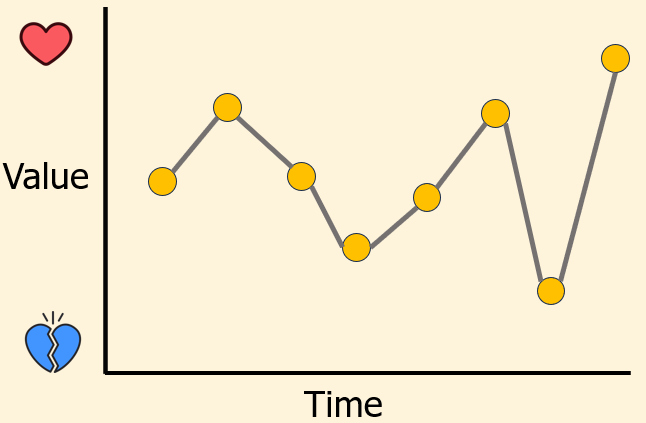Change within Scenes
Change
Stories are ultimately about transformation: how the world changes, how characters change, and ultimately, how we change.
By its definition, a scene is a unit of change. The change may take place in the plot (some event takes place) or a change occurs within a character (usually emotional).
It’s human nature to resist change, which sets up the possibility of conflict (writers’ ears should perk up when we hear those words).
Knowing that change takes place in our scene, we know that things at the beginning of a scene should be different at the end.
Emotional Change
Ultimately, writers of fiction want their readers to connect with and empathize with characters. One of the best ways to do that is to illustrate how characters undergo emotional changes.
Eric Edson suggests that the scene’s protagonist should begin a scene in one emotional state and end with another. For example, if the character begins a scene happy, they shouldn’t end the scene happy. If you’ve started writing a scene and you’re not sure what change to bring into the scene, ask yourself what emotional state the character is experiencing and what would it take to change that state.
Edson suggests that all emotions can be boiled down to four basic feelings: mad, sad, glad, or scared.
Plot Change
One way of measuring the change in a plot is to look at the value shift in a scene. This term is used by Shawn Coyne to describe the positive or negative change that occurs in any scene. The specific value depends on the genre in which we’re writing.

Consider a romance story. The value that’s at play is Love. But Love occurs along a spectrum. At one end are two soulmates in love, at the other, we have sworn enemies. Imagine we have a thermometer that can measure the “love in the air” between two characters. Over the course of the story, the attraction between the two main characters changes. Sometimes their relationship strengthens; other times it gets worse. The characters’ emotions take us on a roller coaster ride, which readers find entertaining.
Every scene should change the story’s main value, in this case Love.
Each genre is associated with a primary value. However, since most contemporary stories are mashups of multiple genres, it’s quite common to have multiple values at play in the same story.
![]()
![]() Crime: justice vs injustice
Crime: justice vs injustice
![]()
![]() Action/Thriller: life vs death
Action/Thriller: life vs death
![]()
![]() Dystopian: freedom vs oppression
Dystopian: freedom vs oppression
![]()
![]() General: good vs evil
General: good vs evil
